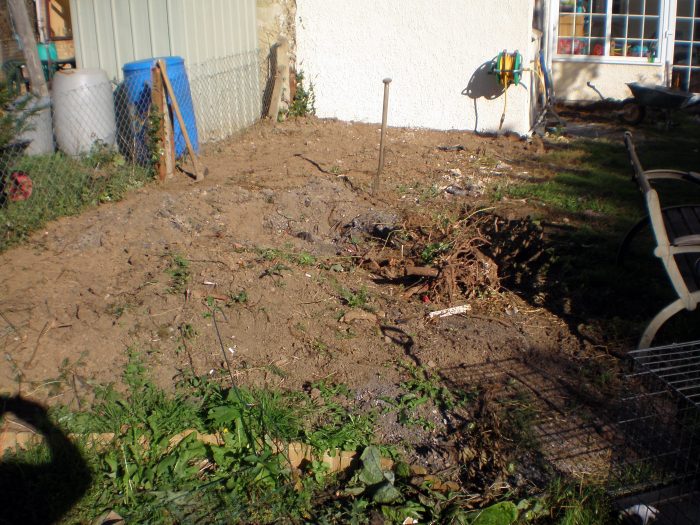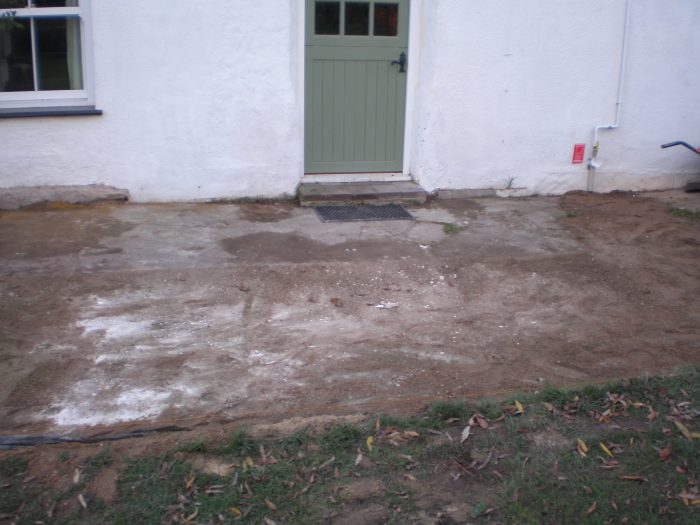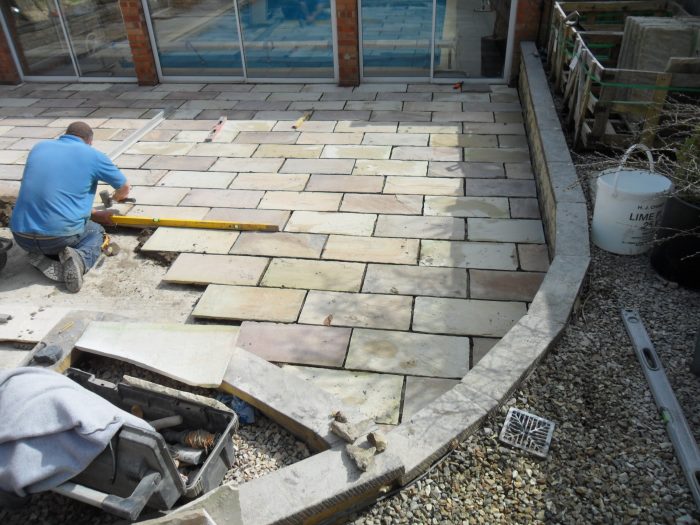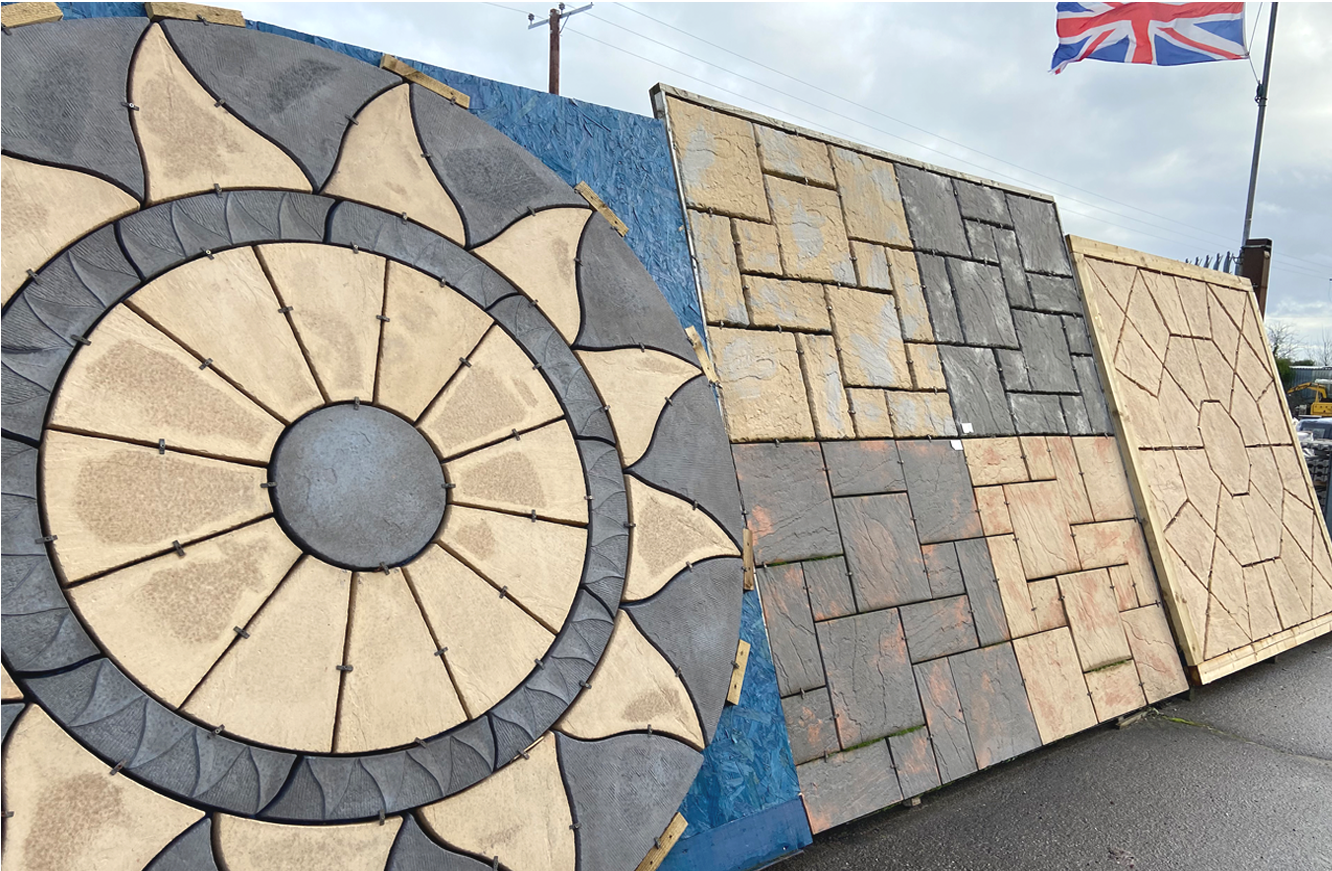
Patio Installation
Planning Stage:
Create a sketch of the area to be paved, showing dimensions and laying pattern, especially if creating a random pattern. Remember, if laying close to the house, the finished paving level must be at least 2 brick courses below the damp-proof course. However if this is not possible, you can leave a gap approx. 2” (50mm) between the patio and the property, and fill with decorative chipping to create a gulley. Always provide a slope to enable surface water to fall away from the house/buildings.
Ground Preparation:
Preparing the ground for paving does depend upon the site conditions and the intended use of the paved area. The area to be paved must be firm and compact to avoid any subsidence. For normal garden situations approximately 30-40mm of compacted sub-base mix, leaving enough depth to accommodate the mortar and slab thicknesses.


Laying:
As our slabs are hand made, and therefore have a variation in thickness, we would advise that you use the full bed system for laying each individual slab. This allows for easy alignment and adjustment for the required finished surface level and gives uniform support to every slab. You should use a slightly wet mortar mix of 1 part cement to 5 parts building sand. It is also advised to apply a primer to the underside of the paving to improve adhesion of the slab.
Starting from a corner or straight edge, using a shovel or trowel, apply the mortar to the sub-base levelling it out, spread enough mortar for one slab at a time to ensure full contact between the paving slab and the mortar. Ideally the bed will make the slab about 1-1½” higher than the finished level of the paving. Ease/push the slabs gently down on top of the mortar, to form a full mortar bed beneath each slab.
Continuous checking of levels and falls should be on-going and should be taken across the top surface profile of a number of slabs remembering that slabs are domed or dished, so take several readings. Also check the slab spacing; gently shuffle the slab with a twist of the trowel until the joints look even.
Care should be taken to ensure that cement is kept off the surface of the paving, as it can cause staining.
Benefits of using the full bed of mortar and primer are :
* Less voids beneath the slabs, which makes them more unlikely to fracture when loaded.
* Less voids beneath the slabs, therefore stopping water accumulating which could lead to subsidence or instability
* Primers or bonding agents secure paving slabs to the bedding mortar, reducing the risk of movement and therefore cracks etc.,
*British Standard 7533: Part 4 which covers the installation of concrete, natural stone flags and slabs, requires that these are laid on a “full bedding layer” giving uniform support, this applies to all classes of pavements including patios and driveways.
*The British Standard recommends that a slurry primer should be applied to the underside of all paving prior to laying to improve adhesion.*
DO NOT WALK ON THE PATIO FOR AT LEAST 24 HOURS
Pointing:
The joints should be pointed as soon as possible, but NOT if it is raining, or snow is forecast.
We suggest using a slightly wet (but not sloppy) cement mortar mix. Using a trowel to push the mix between the joints.
Care must be taken – do not brush across the face of the slab or use too wet a mix – this can cause staining of the slab.




Care & Maintenance:
Before using any cleaning materials, test a small area before cleaning the patio, but use sparingly. Carefully check the information on the container to ensure it is suitable for your product and follow the guidelines given.
We do not recommend power washing the patio as it can damage the slabs and remove the grouting. Washing with running water and softly brushing should be adequate to maintain your patio.
Sealants can be used, but they can affect the colour and texture of the paving, however they can sometimes help to slow the process of weathering, protection from staining and prolong colour, please check the information given on the container.
Differential weathering may occur as dark and light patches on the surface of the paving this is due to the paving curing at different rates and is a natural occurrence. Poor drainage or installing paving onto an existing concrete/paved base can lead to discolouration/staining due to absorption of trapped water.
Efflorescence is a chemical reaction of the cement in the concrete with water, from rain, dew or condensation. There is no hard or fast rule as to why it may occur in one area and not another. The reaction is temporary and is best left to weather out naturally, however it can take some time and we cannot accept any responsibility for its occurrence.
On icy or snow covered patio areas, please be aware that putting salt down on the patio causes rapid thawing and rapid freezing which could lead to the slabs scaling (ie: the top coat of the slab flaking off). We are not responsible for any foreign chemicals used on the surface of the slabs ie: salt (or any form of de-icing) brick acid, bleach etc., which all can and will damage concrete.
Variation in colour and shades of all products is unfortunately unavoidable and must be accepted.
We strongly recommend installing items asap after purchase and not storing them for periods of time. This may exacerbate weathering, discolouration, etc and we cannot be held responsible for any issues that occur.
Note: The above information is given in good faith, but for guidance only. However if alternative laying methods are used it may result in the slabs becoming damaged, and we cannot accept any responsibility for this.
Get in touch
Contact us with regards to any enquiries and further information you require on our products.
We deliver to most locations in Somerset (Weston-Super-Mare, Burnham-on-Sea, Bridgwater, Taunton, Exeter, Street, Glastonbury) If you need your products delivered please contact us

